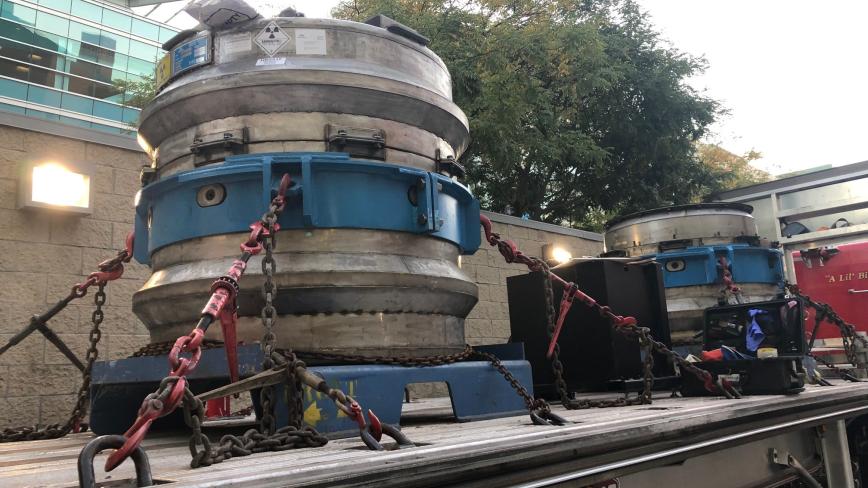Last month, team members from the National Nuclear Security Administration’s (NNSA) Office of Radiological Security (ORS) traveled to California for the annual meeting of the Organization of Agreement States. They discussed their mutual passion, radiological security, and it was somewhat of a reunion, too.
That’s because as part of its health care mission, the University of California maintains a constellation of dozens of irradiators – lifesaving machines that treat blood before it is transfused, aid in research, and more – that span the state. Seven years ago, the system’s blood irradiators all used high-activity radioactive sources like cesium-137 to do their work. In the wrong hands, that material could be used to make a “dirty bomb.”
“Less than a saltshaker’s worth of cesium-137 in a terrorist’s hands could cause catastrophic damage, cost billions to clean up, and panic California communities,” said Christine Bent, head of NNSA’s Office of Global Material Security. “We’re grateful that the UC system and ORS were able to work together to address this.”
It all started changing in 2017 when UC partnered with ORS to implement a safer, more cost-effective, high-tech alternative to cesium-based irradiators: X-ray devices. The collaboration has:
- Removed 90 percent of cesium-based irradiators and replaced them with higher-tech devices – eliminating the risk of radiological terrorism posed by these devices
- Saved $500,000 per irradiator in security costs
“Through this initiative, UC has played a vital role in reducing risks to our communities while demonstrating fiscal responsibility. We’re proud to have contributed to national security while also ensuring responsible stewardship of resources for the UC community” said Ken Smith, executive director for Environmental Health & Safety for the University of California.
“We are on track to complete the removals by the end of 2025, ensuring both enhanced security and significant financial benefits to the UC system,” Smith added.
The Organization of Agreement States includes state and federal radiation regulators from across the country. At the conference, they shared best practices, status updates, and expertise to collaboratively advance radiological security on behalf of all Americans. Members of ORS were able to update participants on the status of the partnership with the UC system.
With state and university leadership, physician and researcher buy-in, guidance, support, and ORS funding and expertise, the partnership continues today to dramatically reduce the risk of radiological terrorism for 39 million Californians.
Learn more about ORS and the Cesium Irradiator Replacement Program.

